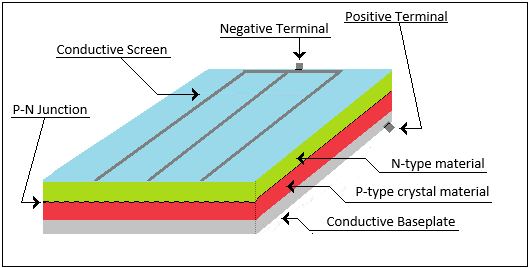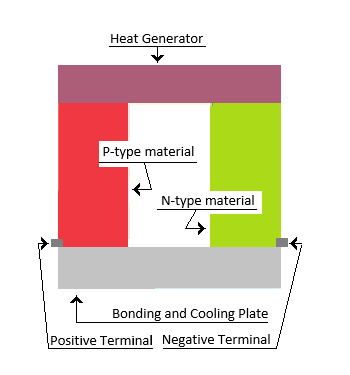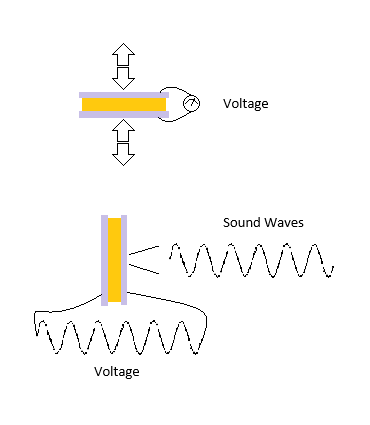Go Home
Go To Introduction
This is Book 1
Chapter 1 - Electricity
Chapter 1.2 - The Numbers
Chapter 2 - Sharing and Bonding
Chapter 3 - Voltage
Chapter 3.2 - Voltage Static
Chapter 3.3 - Batteries
Chapter 3.4 - Solar - Others
Chapter 4 - Resistance
Chapter 4.2 - Parallel Resistance
Chapter 4.3 - Voltage Dividers
Chapter 5 - Semiconductor
Chapter 5.2 - PNP NPN Junctions
Chapter 6 - Capacitor
Back To The Guide
To Book 2
Photovoltaic Generation - Solar Cell
Another lesser widely used method of generating electrical energy today is
Photovoltaic cell. This cell is commonly called a Solar Cell, and
converts photons, from the sunlight, or any light, directly into electricity.
One common style of solar cell is build using a fused silicon wafer stack.
This arrangement is called a P-N Junction sandwich. The bottom plate of the
stack is a conductive plate. The next layers in order are the p-type crystal
material layer, the n-type material layer, a conductive screen contact area,
and a protective covering that allows the light through. This p-n junction
is the foundation of the semiconductor process and will be described in more
detail in the general semiconductor section later in the book.
When the sunlight hits the stack (sandwich) it converts the sunlight's photon
energy directly into electrical energy through the production of electron-hole
sets. Recall that electrons carry a negative charge, and the holes are
electron receivers with a positive charge. The electrons are "boiled" off the
p-type material build up on th n-type plate and the holes are created on the
p-type plate of the cell. Once a circuit is attached to the cell the
electrons can flow out the negitive terminal through the circuit and back into
the positive terminal.
A small array of solar cells are being used to power many low cost calculators,
and charge batteries for outdoor landscape lighting. Larger arrays can be
connected to a power convertor are used in places where an alternated electrical
source is desirable or necessary. One example are the cell arrays supplying
power to the self-contained weather monitoring stations in the mountains of
Colorado, USA. The stations are places in remote areas across the Rocky
Mountains where their only power source is from the solar array. These stations
transmit their weather updates to the data center using satellites.
Some caution should be used when speaking of photovoltaic cells and calling
them Solar Cells. Other renewable energy fields use the same term Solar Cell
to define equipment that heats air or a liquid for use in space heating. These
are solar cells but they are not photovoltaic.
Untapped technology to ponder: Think of how much fuel each train could save
if the roof of every box car held a large photovoltaic panel. The drive wheels
on locomotives are propelled by electric motors which are powered by a diesel
engine-generator set under the hood. Box cars do spend a lot of daylight
sitting in the sun, and this energy could help reduce the cost of operations.
Thermoelectric, Piezoelectric, and Bata-voltaic Generations
The Thermoelectric Generations
The thermoelectric effect was discovered by Thomas J Seebeck in 1821. He
discovered that when heated different metals, as the temperature get hotter a
small voltage will increase. By bonding the metals like iron with
constantan, for example, and then heating the bonded junction area, a small
voltage is generated.
This bonded junction called a thermocouple is widely used as a control
device in applications and equipment where heat in used. For example,
natural gas devices including furnaces, hot water heaters, gas fireplace
inserts and outdoor propane barbeque grills use this thermocouple process
to verify the pilot flame is burning prior to allowing the main gas valve
to open.
The newer discoveries and developments with the p-n junction are leading to
new technologies in P-N thermoelectric usage.
Piezoelectric Generation
The Piezoelectric effect is probably one of the lease talked about in
electronics, however uses. It produces a very small level of electricity.
It is a bi-directional effect. When a pressure, stress or a vibration is
applied to a crystal it generates electricity. Likewise when electricity
is applied to the crystal it will flex and vibrate.
Computers, electronic wrist watches, cell phones, radios and televisions,
traffic signal lights, microwave ovens, cars, and aircraft navigation
equipment, are just a sampling of the devices that use the piezoelectric
effect in their electronics. The piezoelectric crystal is made by
cutting a thin slice of a crystal, attach a contact point to the two
parallel sides, and mount it in a hermetically sealed can.
By placing a small electric charge across the crystal, a vibration takes
place within the crystal. If this charge is in the form of a radio output
then we will hear the radio on its piezo speaker. This is how most of us
experience this effect. However, in a different type of circuit this small
charge causes the crystal to vibrate which in turn causes a small voltage
pulsing. We can capture that small continuous stream of pulses and use
them as a time standard in many of the electronic gadgets we use every day,
from our cell phones and microwaves to our automobiles and computers.
Beta-voltaic Generation
This is one of the newest electrical generator discoveries powered from
Nuclear power. The radioactive isotopesplaces adjacent to the P-N Junction
emits beta particles which cause electrons to flow. This is basically a
beta energy to electrical energy pump.
« Previous Chapter Next Chapter »
Email us: info@shoeboxkits.com



